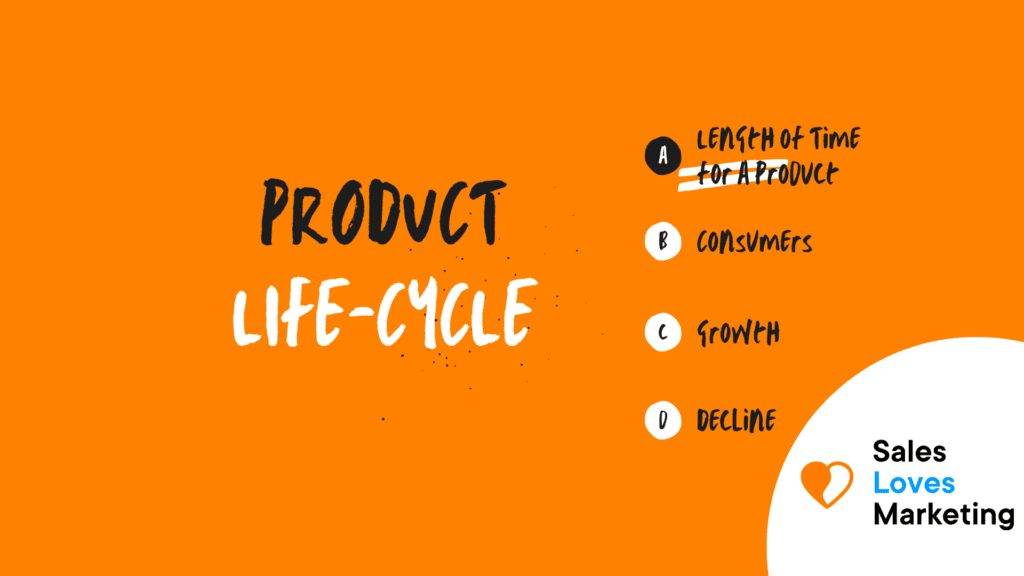What is a Product Life Cycle?
Product Life Cycle or PLC is a series of stages a product goes through from when it is placed on the market until it is withdrawn from the market, either because customers purchase it, it expires, the market is saturated, or sales decline.
Analyzing the Product Life Cycle allows companies to plan strategies for improving existing products and developing new products.
The duration and form of the PLC can vary. An example is fashion items which usually have a high growth rate that lasts for a short time, as well as technological equipment, which also has a short life cycle or, in the case of aircraft, which can last for years.
Why are Product Life Cycles important?
Product Life Cycle is based on the assumption that each product placed on the market goes through different stages with different scope and duration.
Knowledge and analysis of this process provide important information that helps companies detect whether their products are efficiently serving their target market and whether a change of approach is needed.
Likewise, a detailed analysis of a product’s PLC in relation to those of competitors or others in the market can help decide how to develop it to have a longer market life.
It can even help determine whether new products need to be launched to continue selling, which is clearly seen when existing products are in the maturity or decline stage.
It is important to know that this process can be used in almost all companies.
What are the Five Stages of the Product Life Cycle?
Products go through a series of stages in their life cycle. Each of them is different in cost, time, opportunity, and risk. It is essential to know them to plan, make decisions and act for the benefit of the company’s profitability.
Up next we mention the five stages of the Product Life Cycle:

Development
The first of the stages of the product life cycle (PLC) is nothing more than the period of time in which market research is carried out to launch a product. This step requires an investment that sometimes comes from the revenues of other existing products or, in the case of a new company, from its own resources.
In this process, it is reviewed what the demand is, the degree of consumer perception and behavior, how it compares with the competition, among other factors.
Introduction
This is the stage in which a market for the product is developed, i.e., it is presented, and awareness is created in the target public. In general, this period is characterized by high marketing costs for being personalized, high prices to recover costs, low production, external financing, personalized marketing, etc.
Growth
In this period, the product has certain acceptance by customers. An increase in product demand characterizes it, higher revenues, companies put all their efforts into increasing their market share, higher or lower product price, marketing to a larger audience, financing comes from third parties or institutions and/or sales revenues, etc.
Maturity
In this part of the process, it is observed that sales tend to be more stable, there is more competition, and therefore the product can be improved not to lose market share, production costs are a little lower, and therefore prices tend to decrease a little, financing is almost non-existent, etc.
Decline
In general, at this stage, income decreases because there is a lot of competition in the market, and customer needs change. Different strategies can be implemented here, such as selling the manufacturing rights to another company with a better chance of success, taking advantage of export markets, discontinuing the product, finding new uses for the product, modifying the packaging and characteristics to make it more attractive to consumers.
Examples of Product Life Cycles
To appreciate an example of products in the introduction stage, you only have to connect to a media outlet and see the promotion of a new product such as a new flavor of chewing gum, a new hair product, a new cookie, or any other.
If you are talking about the growth stage, an example could be a model of a snack cover launched at the end of last year whose sales and production are in the growth stage.
Among the products that are in the maturity stage, we have Evian mineral water, Kelloggs Corn Flakes, among others.
Some examples of products that have been discontinued or withdrawn from the market after going through the decline stage are the typewriter, Sony’s Betamax, Samsung’s Galaxy Note 7, Amazon’s Fire, HP Touchpad, Facebook Home, Google Glass, Netflix Qwikster, Twitter Peek, HD-DVD, Sega Dreamcast, etc.
